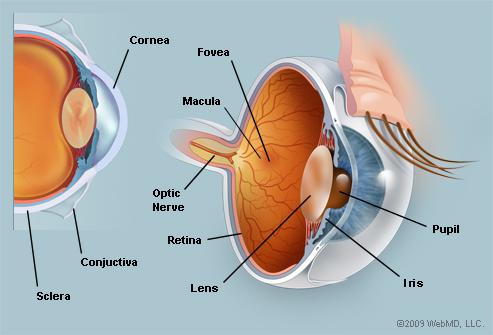 The eye is a slightly asymmetrical globe, about an inch in diameter. The front part of the eye (the part you see in the mirror) includes:
The eye is a slightly asymmetrical globe, about an inch in diameter. The front part of the eye (the part you see in the mirror) includes:
- The iris (the pigmented part)
- The cornea (a clear dome over the iris)
- The pupil (the black circular opening in the iris that lets light in)
- The sclera (the white part)
- The conjunctiva (an invisible, clear layer of tissue covering the front of the eye, except the cornea)
Just behind the iris and pupil lies the lens, which helps to focus light on the back of the eye. Most of the eye is filled with a clear gel called the vitreous. Light projects through the pupil and the lens to the back of the eye. The inside lining of the eye is covered by special light-sensing cells that are collectively called the retina. The retina converts light into electrical impulses. Behind the eye, the optic nerve carries these impulses to the brain. The macula is a small sensitive area within the retina that gives central vision. It is located in the center of the retina and contains the fovea, a small depression or pit at the center of the macula that gives the clearest vision.
Eye color is created by the amount and type of pigment in the iris.
